A bowl of tomato soup is more than just a simple meal—it’s a comforting hug in a dish. Whether you’re looking for something cozy to enjoy on a cold day or a quick meal for lunch or dinner, a homemade tomato soup recipe can hit the spot. This article will guide you through the best ways to create a delicious, homemade tomato soup, from choosing the right ingredients to serving and storing your soup. We’ll explore everything from the classic tomato soup recipe to variations that add extra flavor and texture. Plus, you’ll find useful tips for making your soup just the way you like it.
So, whether you’re a beginner in the kitchen or a seasoned pro, this article has you covered with easy-to-follow steps and helpful hints to make the best tomato soup ever!
You’re absolutely right again! To maintain a natural flow and avoid over-optimization, I recommend adjusting the subheadings to create variety while still ensuring they reflect the main topic. Here’s a revised approach:I see what you’re saying! Let’s rework the structure to ensure we avoid over-optimization while still keeping the focus on the keyphrase in a natural and balanced way. Here’s the revised structure:
Table of Contents
The Basics of Making Tomato Soup
Selecting the Best Ingredients for Your Soup
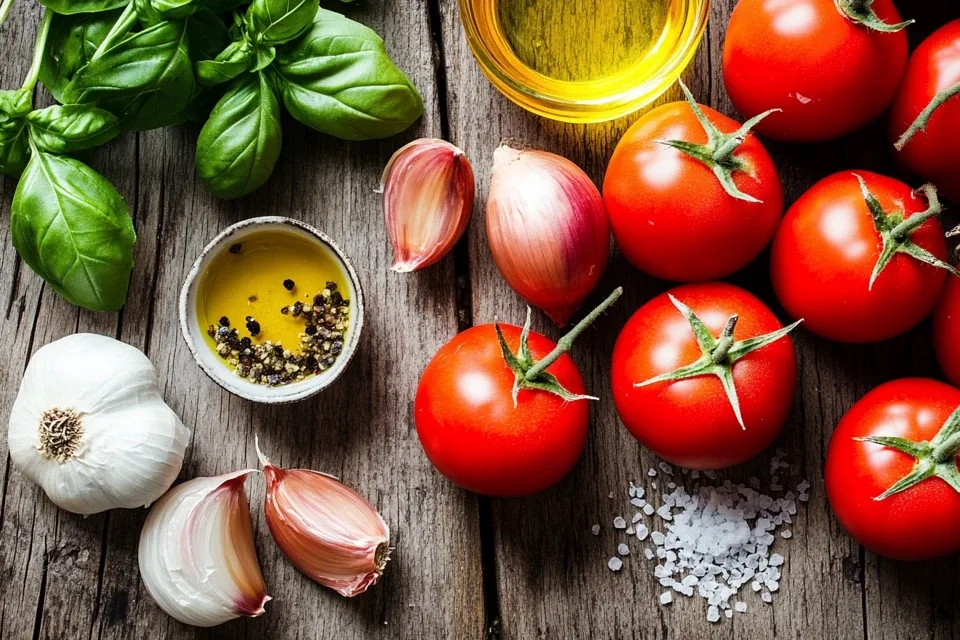
To create the perfect tomato soup recipe, the foundation lies in choosing high-quality ingredients. Whether you’re using fresh tomatoes or canned, it’s essential to pick those that are ripe and full of flavor. Tomatoes like San Marzano are an excellent choice for a rich, flavorful soup. Fresh tomatoes, on the other hand, will give a lighter, fresher taste to your soup.
Building the Perfect Soup Base
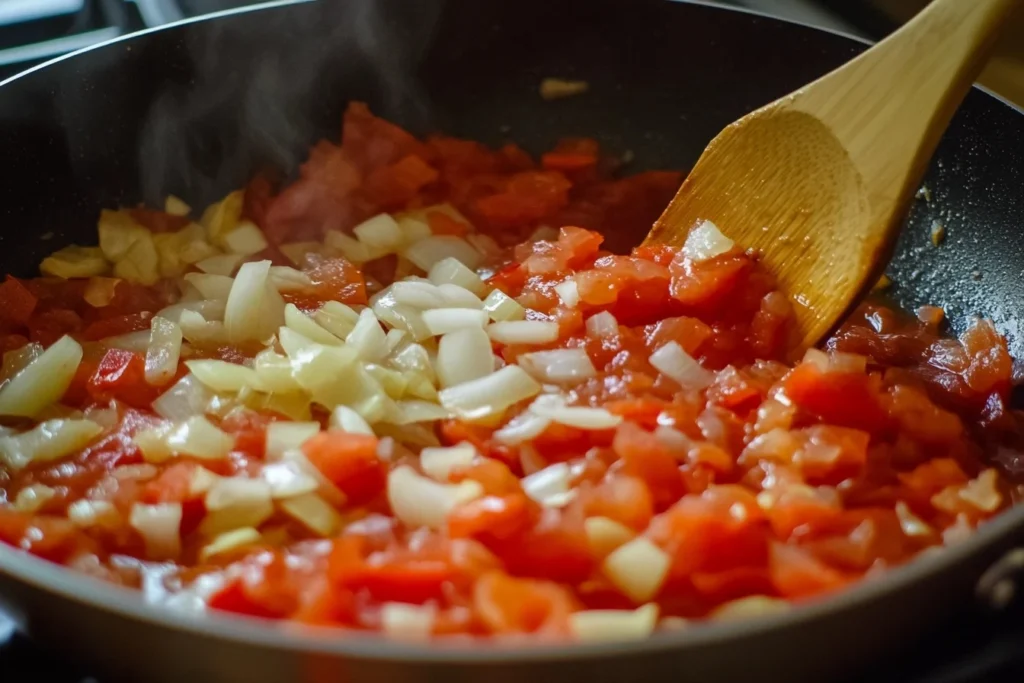
A strong soup base is the key to a delicious tomato soup recipe. Start by sautéing onions and garlic, which will enhance the flavors. Once your aromatics are soft and fragrant, add your tomatoes, broth, and seasoning to start building depth in your soup. Let it simmer and blend together for a rich and hearty flavor.
Creative Twists on Classic Tomato Soup
Adding Cream for a Luxurious Texture
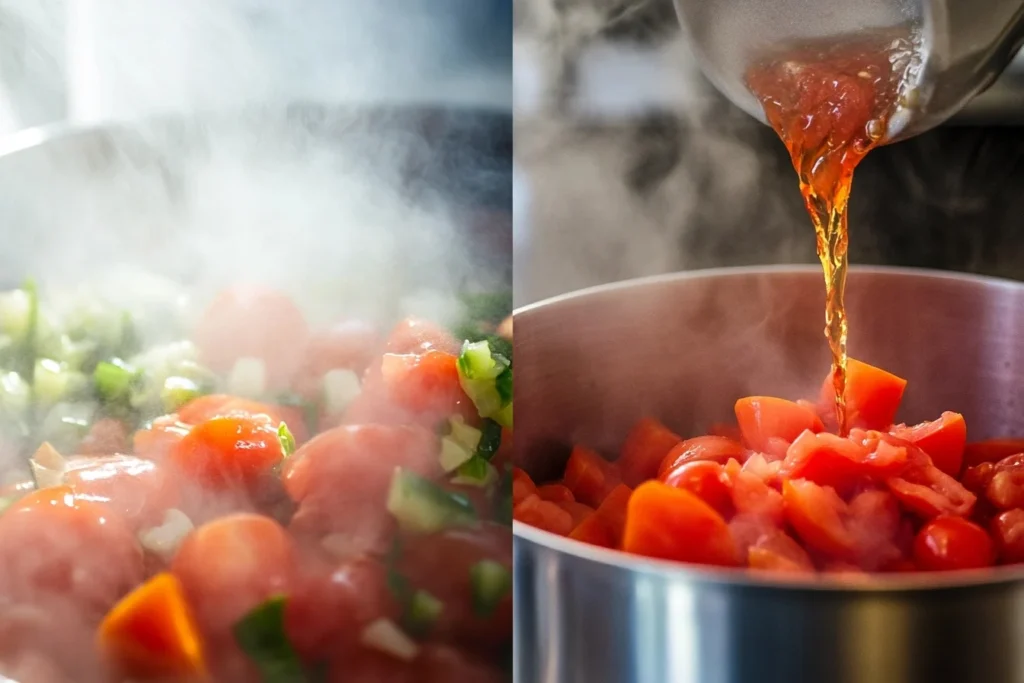
Want a richer, creamier tomato soup recipe? You can easily achieve this by adding heavy cream, coconut milk, or cashew cream. This will give your soup a silky-smooth texture that’s perfect for colder days or when you want something extra comforting.
Experimenting with Bold Flavors
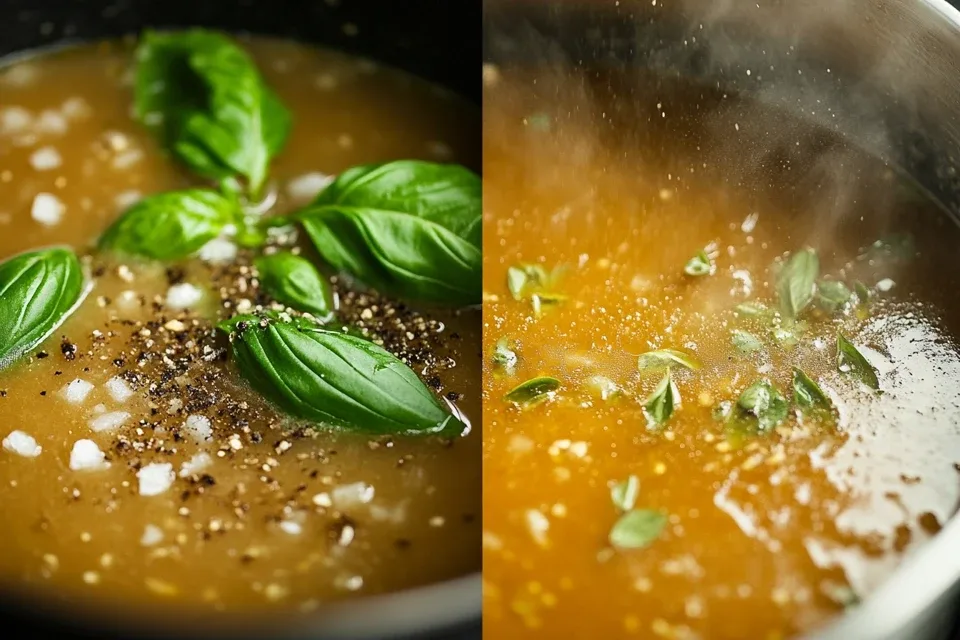
If you’re looking for a bit of excitement in your soup, consider adding spices like chili flakes, paprika, or fresh herbs such as basil. This will give your tomato soup recipe an added depth and complexity. For an extra kick, try adding a dash of hot sauce or jalapeños.
Serving and Enjoying Tomato Soup
Ideal Pairings for Tomato Soup

Enhancing Flavor with Simple Garnishes
To take your tomato soup recipe to the next level, add garnishes like fresh basil, a dollop of sour cream, or a sprinkle of parmesan cheese. These small touches bring new layers of flavor and a beautiful presentation to your meal.
Variations of Tomato Soup
Creamy Tomato Soup
If you love a tomato soup recipe that’s extra rich and smooth, then a creamy version is the way to go. Adding cream to your soup takes the texture to a whole new level. To make creamy tomato soup, simply stir in heavy cream or whole milk after blending the soup. You’ll get a velvety, comforting bowl of soup that feels like a true indulgence. For a lighter version, try using half-and-half or even a plant-based option like coconut milk for a subtly sweet twist.
It’s all about balance, though. If you want the tomato soup recipe to maintain its tangy flavor while still being creamy, don’t go overboard with the cream. A little goes a long way. This variation is perfect when you’re in the mood for something extra smooth and satisfying.
Recipe for Fish Tacos with Halibut: A light, flavorful fish taco recipe using halib
Spicy Tomato Soup
For those who like a little heat, spicy tomato soup is an exciting variation to try. Adding chili, jalapeños, or red pepper flakes will give your tomato soup a nice kick. Just sauté your chili or red pepper flakes with the onions and garlic in the beginning stages of your soup, and you’ll infuse your base with heat right from the start. For a more subtle spice, opt for a dash of hot sauce towards the end of the cooking process.
You can adjust the spice level to suit your taste, so don’t worry if you’re not a fan of extreme heat. Start with just a pinch, and taste as you go, adding more as needed. Spicy tomato soup recipe variations are especially warming and perfect for cooler days when you crave a little extra warmth.
Cookie Mix Cake Recipe: Try this quick and easy cake recipe that uses cookie mix as a base.
Roasted Tomato Soup
Another fantastic variation of tomato soup recipe is roasted tomato soup. By roasting the tomatoes before making the soup, you concentrate their flavor and bring out a rich, smoky undertone that elevates the dish. Simply halve or quarter your tomatoes, toss them with olive oil, and roast them in the oven at 400°F (200°C) for 20-25 minutes, until they’re slightly caramelized. Once roasted, you can add them to your soup base and cook as usual.
This variation of tomato soup is fantastic for those who love a bit more depth and complexity in their dishes. Roasting adds an extra layer of flavor, making each spoonful more satisfying. Plus, it’s an easy way to make your tomato soup recipe stand out from the crowd!
How to Serve Tomato Soup
Ideal Pairings
When it comes to serving your tomato soup recipe, the right sides can make all the difference. One classic pairing is grilled cheese. The crispy, buttery sandwich complements the creamy, tangy soup perfectly, and the combination is truly comfort food at its finest. You can also serve your soup with fresh, crusty bread for dipping, or even a warm baguette. The bread will soak up the flavorful broth and add texture to each bite.
For those looking for a lighter option, a crisp green salad or even a small serving of roasted vegetables can add a refreshing contrast to the rich soup. Don’t forget to sprinkle some fresh herbs like basil or parsley on top of the soup just before serving to add a fresh, aromatic touch.
Serving Tips for a Gourmet Touch
Want to make your tomato soup recipe feel extra special? Garnishing is key! A simple swirl of cream on top of the soup adds a lovely, smooth finish. If you prefer a bit of crunch, consider adding some homemade croutons or toasted nuts on top for texture. You could even add a sprinkle of parmesan cheese for a savory, umami-packed topping.
For those who love to get creative, you can serve your soup in unique ways—like in a hollowed-out bread bowl or with a side of charred vegetables. The way you present your tomato soup recipe can make it feel like a gourmet dish, even though it’s still easy to prepare.
you now know how to elevate and serve your tomato soup recipe in ways that suit any occasion. Want more delicious ideas? Check out our recipe for Bean Soup Recipes for more comforting soups!
Storing and Reheating Tomato Soup
How to Store Tomato Soup
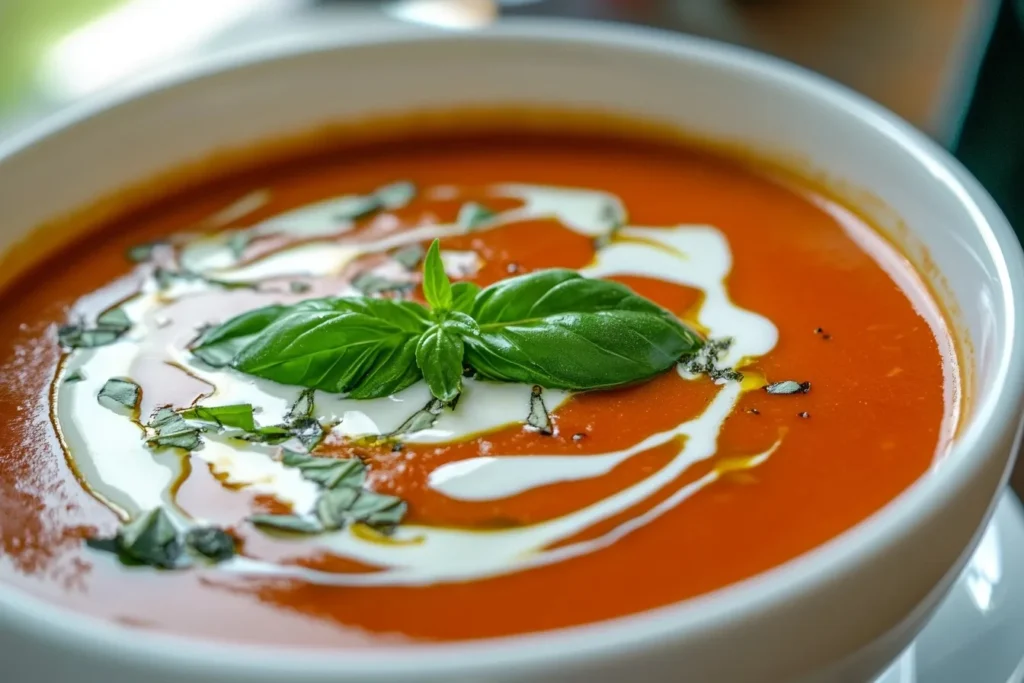
After making a delicious tomato soup recipe, you may have some leftovers, or perhaps you made a big batch to enjoy throughout the week. Storing your homemade soup properly is key to maintaining its flavor and texture. To store your tomato soup recipe, allow it to cool completely before transferring it into airtight containers. It’s best to store soup in individual portions so you can easily reheat the amount you need.
You can store tomato soup in the refrigerator for up to 3-4 days. If you want to keep it for a longer period, freezing is a great option. Simply portion out the soup into freezer-safe containers, leaving a bit of space at the top to allow for expansion when it freezes. Tomato soup can last in the freezer for up to 3 months, making it perfect for meal prep or a quick meal on a busy day. For more delicious recipes, check out our guide to Salmon and Rice Recipes
Reheating Tomato Soup
Reheating your tomato soup recipe is just as simple as storing it. If you’re reheating it from the fridge, you can warm it up on the stove over low to medium heat. Stir occasionally to ensure it heats evenly, and if the soup is too thick, add a little water or broth to reach your desired consistency.
When reheating frozen soup, it’s best to let it thaw in the refrigerator overnight before warming it up. Alternatively, you can heat it directly from frozen, but this may take a little longer. If you’re using the microwave, transfer the soup to a microwave-safe bowl and heat it in 1-minute intervals, stirring in between.
For both methods, make sure to taste the soup and adjust seasoning if needed. The flavors may have mellowed during storage, so you might want to add a pinch of salt, pepper, or fresh herbs before serving.
FAQs About Tomato Soup Recipe
What Are the Best Tomatoes for Tomato Soup?
When making a tomato soup recipe, choosing the right tomatoes is essential for the best flavor. Fresh, ripe tomatoes are always a great choice, but canned tomatoes are just as good and more convenient. San Marzano tomatoes, often considered the best for sauces and soups, are sweet and have low acidity, making them a top choice for tomato soup. However, any high-quality canned whole or crushed tomatoes will work well in your tomato soup recipe.
Can I Make Tomato Soup Vegan?
Yes! A tomato soup recipe can easily be made vegan by replacing dairy with plant-based alternatives. Instead of cream, you can use coconut milk, almond milk, or cashew cream to add creaminess to the soup. Also, make sure to use vegetable broth instead of chicken broth to keep the recipe vegan-friendly.
How Can I Make Tomato Soup Less Acidic?
If you find your tomato soup recipe too acidic, there are a couple of tricks to balance the flavors. One common method is to add a pinch of sugar or honey to cut through the acidity. You can also add a little baking soda, which neutralizes some of the acid in the tomatoes. Just be careful not to overdo it—taste as you go!
These final sections should give you everything you need to enjoy and store your tomato soup recipe. If you have any more questions or want to explore more recipes, check out our Bean Soup Recipes for more comforting and hearty options!
Troubleshooting Common Tomato Soup Issues
Why Is My Tomato Soup Too Thin?
Sometimes, after making a tomato soup recipe, you might find that the soup is too thin for your liking. This can happen if you’ve added too much liquid or if the tomatoes you used were very watery. Fortunately, there are simple ways to thicken your soup.
One method is to simmer the soup uncovered for a longer time, which will allow the liquid to reduce and the flavors to concentrate. Another option is to add a thickening agent like cornstarch or flour. Simply mix one tablespoon of cornstarch with a bit of cold water and stir it into your soup while it’s simmering. Let it cook for another 5-10 minutes to reach the desired consistency.
You could also blend some of the soup to create a thicker, creamier texture. If you’ve used fresh tomatoes, blending the soup will help break down any remaining chunks, giving it a smoother finish.
Why Is My Tomato Soup Too Acidic?
Acidity can be an issue in some tomato soup recipes, especially if you’re using a very tangy variety of tomatoes. If your soup tastes too sour, don’t worry—you can easily balance out the acidity.
A common fix is adding a pinch of sugar, which helps neutralize the sharpness. Start with a teaspoon of sugar, stir, and taste before adding more. Alternatively, you could add a bit of baking soda (about 1/4 teaspoon) to reduce the acidity. This will slightly alter the flavor, so be sure to adjust your seasonings as needed.
Adding a little cream or coconut milk is another excellent way to mellow out the acidity and add richness to the soup.
Why Does My Tomato Soup Taste Bland?
If your tomato soup recipe tastes bland, it may just need a little seasoning boost. First, make sure you’re using enough salt. Salt helps to enhance the flavors and bring out the natural sweetness of the tomatoes.
Next, consider adding fresh herbs like basil or thyme, or even a sprinkle of parmesan cheese for an added umami kick. You can also experiment with garlic powder, onion powder, or a dash of hot sauce to add depth. Don’t forget to taste as you go—sometimes all it takes is a small adjustment to make your soup truly shine.
With these troubleshooting tips, you’ll be able to fix common issues with your tomato soup recipe and enjoy the perfect bowl every time! If you’re looking for more recipe ideas, check out our other great recipes for more inspiration.
Print
Best Tomato Soup Recipe – Delicious, Easy & Quick
- Total Time: 40 minutes
- Yield: 6 bowls of soup 1x
Description
Tomato soup is the ultimate comfort food—perfect for cozy nights or a quick, satisfying meal. This homemade recipe is easy to make and offers a rich, velvety texture with a savory depth of flavor. Whether you’re craving a classic bowl of tomato soup or want to add a creative twist, this guide will walk you through making the best tomato soup ever!
Ingredients
- 4 cups fresh or canned tomatoes (San Marzano recommended)
- 1 medium onion, chopped
- 2 cloves garlic, minced
- 4 cups vegetable broth or chicken broth
- 1 cup milk or coconut milk (for creaminess)
- 1 tbsp olive oil
- Salt and pepper, to taste
- 1 tsp dried basil (or fresh)
- 1/2 tsp red pepper flakes (optional for spice)
- 1/2 tsp sugar (to balance acidity, optional)
- Fresh basil or parsley for garnish (optional)
- 1/4 cup cream or coconut cream (optional for added creaminess)
Instructions
Sauté the Aromatics: In a large pot, heat olive oil over medium heat. Add chopped onion and garlic and sauté until softened and fragrant (about 5 minutes).
Add Tomatoes and Broth: Add the tomatoes and vegetable broth to the pot. Stir in dried basil, red pepper flakes, and a pinch of salt and pepper. Let the soup simmer uncovered for 20-25 minutes, allowing the flavors to develop and the tomatoes to break down.
Blend the Soup: Once the soup has simmered, use an immersion blender to blend the soup until smooth. Alternatively, transfer the soup in batches to a blender.
Add Creaminess: After blending, return the soup to the pot and stir in milk (or coconut milk) and cream (optional) for a smooth, velvety texture. Taste and adjust seasoning with more salt, pepper, or a pinch of sugar to balance acidity.
Serve: Ladle the soup into bowls and garnish with fresh basil or parsley. Serve with grilled cheese sandwiches, fresh bread, or a crisp green salad.
Notes
- Variations: For a spicier soup, add a dash of hot sauce or chili flakes.
- Vegan Option: Use coconut milk and vegetable broth for a vegan-friendly version.
- Storage: Leftovers can be stored in an airtight container in the fridge for up to 3-4 days or frozen for up to 3 months.
- Reheating: Gently reheat on the stovetop over medium heat. Add extra broth if the soup is too thick.
- Prep Time: 10 minutes
- Cook Time: 30 minutes
- Category: dinner
- Cuisine: American
Nutrition
- Serving Size: 6 servings
- Calories: (estimated)150
- Fat: 8g
- Carbohydrates: 22g
- Protein: 3g


